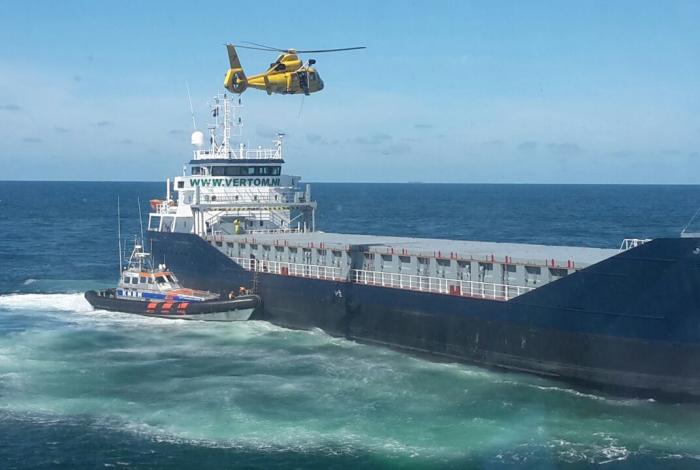
Fire in engine room, Maas approaches
On 26 June 2017, a fire occurred in the engine room of a Dutch cargo vessel. The vessel was en route to Rotterdam, and was already in the approach to the port entrance. The crew succeeded in extinguishing the fire, and the ship was towed into Rotterdam. As a result of the fire, two crew members were injured, and the ship suffered serious damage. The almost 90 metre-long ship was in compliance with the requirements in the manning certificate with a captain, first officer, maritime officer and 2 ratings, on board. There were a further 3 trainees on board. The maritime officer had just graduated from school, and was making this first trip. He had been given responsibility for the engine room. The fire occurred when lubricating oil from the main engine escaped from a filter, under pressure. The lubricating oil formed a mist which filled the engine room, and ignited when it came into contact with hot parts of the main engine.
Following the accident, the Safety Board launched an investigation. A number of interviews were held, and an investigation was carried out on board. Based on the facts observed, the course of events was determined:
- The lubricating oil spray occurred after the maritime officer removed a venting bolt from the filter, while the filter was still under pressure;
- The safety mechanism intended to prevent this action and that also issued a warning, was not recognized as such. The mechanism consisted for a triangular cover that held three of the four attachment bolts of the filter cover in place. The cover was attached by the venting bolt and was fitted with a milled duct along which oil was able to escape, if the bolt was slackened, while the filter was still under pressure;
- Before removing the venting bolt, the pressure on the filter should have been released by redirecting the lubricating oil to another filter, by means of an operating handle. However, the operating handle was incorrectly fitted, so that the indicator on the handle showed that the oil was being redirected via the other filter;
- Because the handle was incorrectly fitted, it could not be operated, so that the lubricating oil would be directed via the other filter, therefore halting the spray of escaping oil. The handle was blocked by pipework on the engine;
- The lubricating oil mist activated the fire alarm. After the oil mist had been identified as the cause of the fire alarm, the risk of fire or explosion was not recognized. Two crew members remained in the engine room to shut down the main engine manually. The emergency stop on the bridge could also have been used to shut to down the engine;
- Both crew members saw the fire start and were barely able to escape from the engine room, but they did suffer burns;
- Before the fire could be extinguished with CO2, all ventilation openings with fire valves first had to be closed. The fire valve below the outside stairs to the bridge was difficult to close, because the operating handle was difficult to reach as a result of smoke and heat.
This incident is described in the Shipping Occurrences Report covering May 2020 - October 2020.
